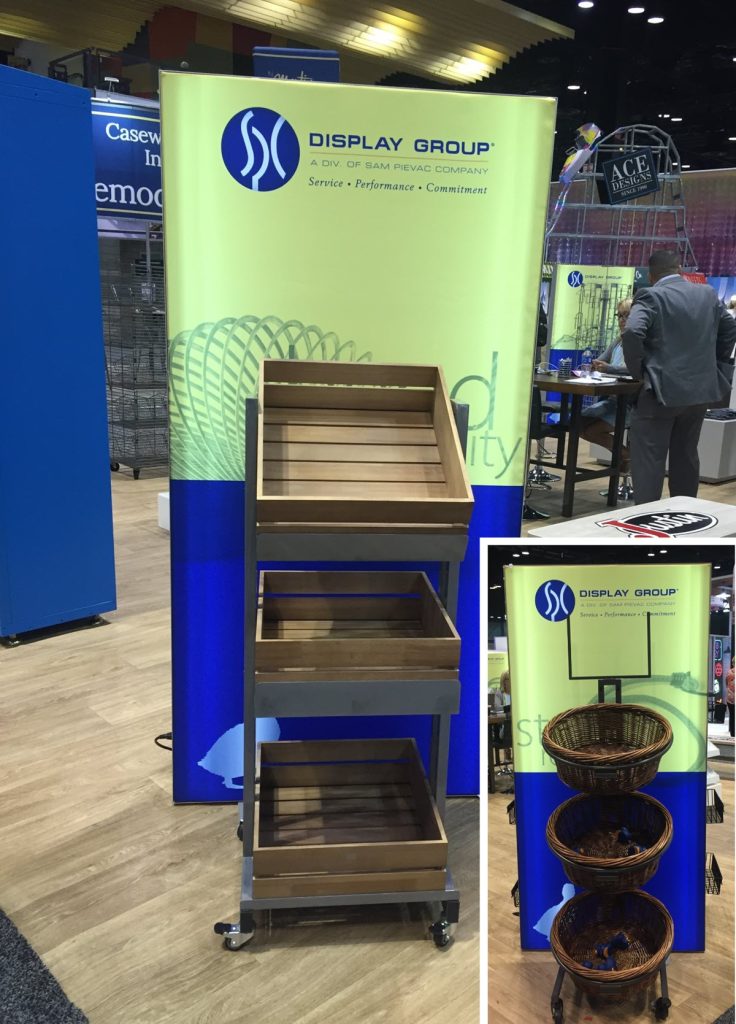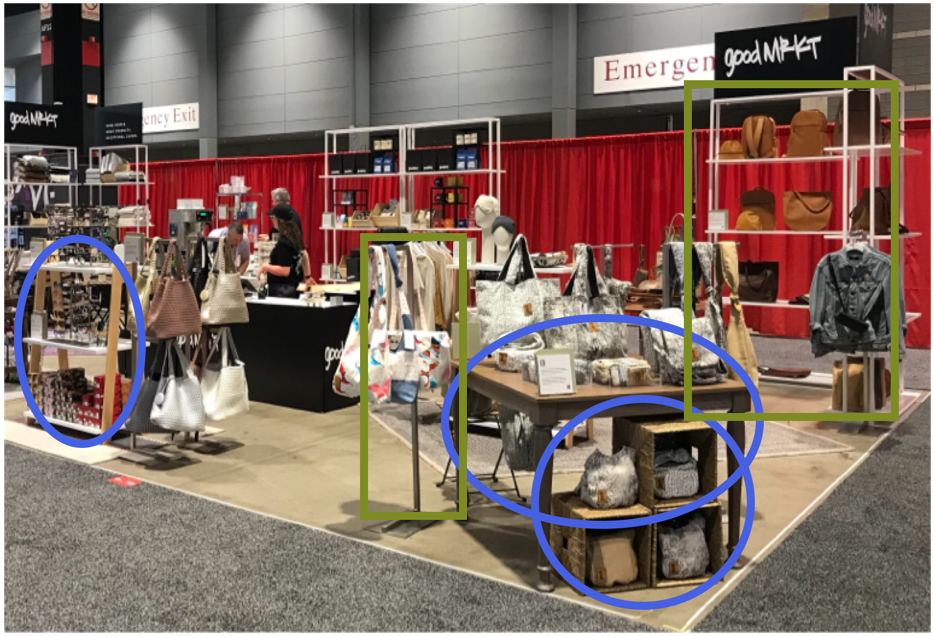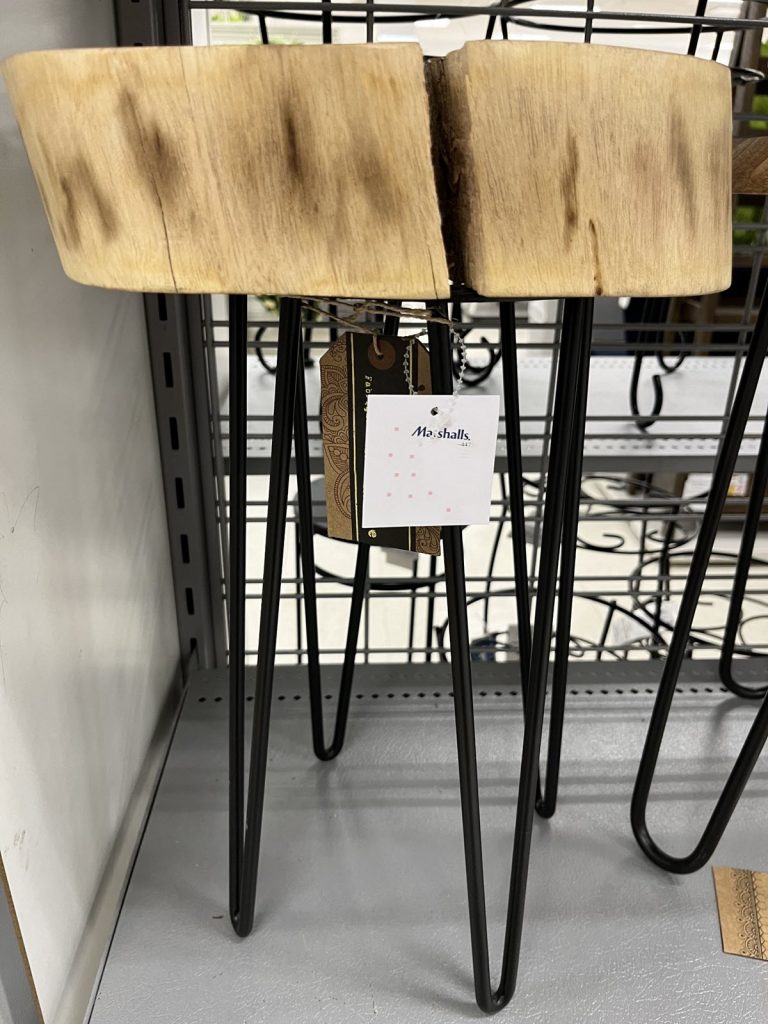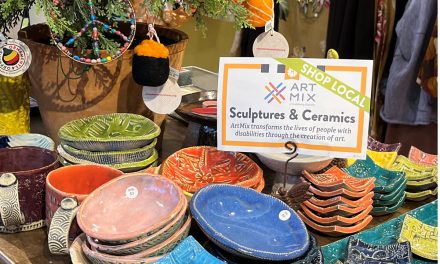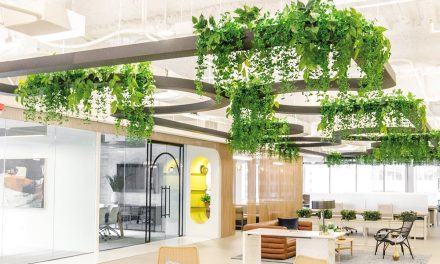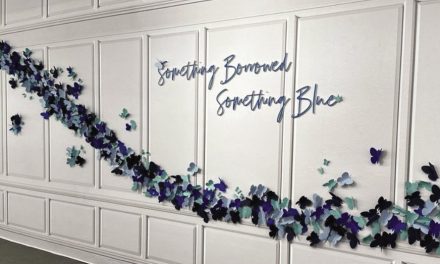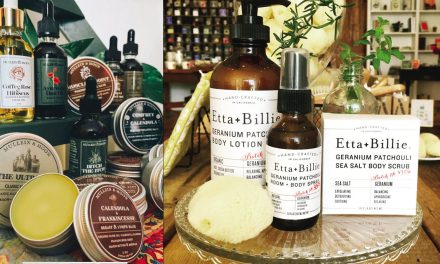By Amy Meadows
Chances are your store has both official fixtures AND furniture used as fixtures — and that is fine.
The dilemma is determining which tool is best for which job. There are no universal solutions — no one-size-fits-all categories.
But trust me, the tables, cubes, racks, hutches, and shelves you use for your product can make a big difference in the efficiency and effectiveness of your store layout. Money spent on items that are less than professionally made or unreliable in terms of safety and maintenance is wasted money. And who has money to waste? Nobody.
There are resources for each consumer. Furniture items are sold as either consumer items (everyday use in homes) or contract grade (heavy, continuous wear and tear in places like hotels, restaurants, and retail).
For retail-specific fixtures, there are trade shows and showrooms for business owners. In some cases, there is minimum purchase pricing, which can be cost prohibitive for independent shops.
I recommend visiting websites like vmsd.com for a glimpse at the range of offerings shown in ads. If you are looking to create a fixture plan for your store with coordinated styles and finishes, this is where you should go. If your look is a bit more eclectic, you should be able to mix and match.
Hard Versus Soft Lines
While there are some merchandise overlaps between bed linens and T-shirts on nesting tables, the traditional size and quantities of goods demand different pieces of merchandising or display items. This is what you need for hard lines:
- Tables — nesting and individual, with or without tablecloths or runners.
- Etageres.
- Shelves — freestanding and wall-mounted.
- Hutches.
- Risers/pedestals/plinths.
- Baskets — wicker, wood, and rattan. Be sure there are no snagging risks.
It is unlikely you will need floor standing racks for hanging items, but I have seen them used for table and bed linens. The following are needed for soft lines:
- Clothing racks — usually chrome — T-stands, four ways, and rounders.
- Tables, preferably nesting.
- Wall-mounted shelving, rails, and brackets.
- Tabletop trays and baskets for accessories.
- Glass-topped counters/vitrines for accessories.
- Armoires/wardrobes.
As you see, both hard and soft lines utilize tables and shelves. Shelves are shelves are shelves, right? Wrong! What are you putting on those shelves, and how much weight do they hold?
Weight limits are posted for both commercial and consumer products. Pay attention to that magic number.
An expensive, decorative wall-mounted shelf meant for an apartment or home can do a decent job holding small candles or accent pieces in your shop. But if you overload them with jars of jam, books, or pottery, I guarantee your shelves will bow. The unit might simply pull away from the wall — ruining the product on display.
Before you hit purchase for SHELVES, evaluate the following details:
- What is the weight limit?
- Are you drilling into drywall? Use anchors.
- Are the shelves solid wood or medium density fiberboard that has been painted or laminated? Manufactured lumber keeps costs down but is vulnerable to warping.
- Is it sturdy? Customer safety is paramount.
- If it is a large shelving unit, be prepared to attach it to the wall. Items over 5 feet often become top heavy and risk toppling.
Or perhaps you are looking for TABLES — round, rectangular, nesting, folding, accent, stacking — smaller tables to use near your entrance for trends statements or maybe larger surfaces for tableware and decorative accessories for homes.
As you shop, you will experience the same commercial versus consumer categories. Do not forget that tables can be covered with full tablecloths to the floor, with toppers or runners for an additional color or texture.
Sources for Fixtures
When I am looking for lightweight, low-cost, short-term items that will be more decorative than durable, I inevitably begin at Cost Plus World Market. If you want to dip your toes in the world of official furniture and see what is available, there is always Facebook Marketplace.
Many treasures turn up on that platform. Habitat for Humanity and other resale/recycling outlets help drive sustainability goals, which is long overdue in the visual merchandising industry.
If I need something sturdier, I begin at IKEA. While the traditional selection may lean toward dorm room or first apartment, what is utilitarian and cost-efficient for that market can suit your needs quite easily. I recommend you have a trusted second pair of hands on-site to correctly execute the assembly.
Finally, official fixtures for less? The bad news is many chain and big-box retailers have closed. The good news is that often means there are liquidation sales.
Regional malls are often sitting on quantities of racks, T-stands, and shelves that will go to liquidators for resale. I recommend contacting your closest mall and asking for assistance to track down that information.
Malls are also eager to rid their storage areas of excess items. Again, make a call — it is worth a shot. You will likely find the same manufactured fixtures that are advertised in VM+SD magazine and exhibited at industry trade shows like Retail Innovation (Globalshop).
Have an interesting display to share? Or a question about visual merchandising strategies for your business or your district? Visit www.windowsmatter.com for more information.


